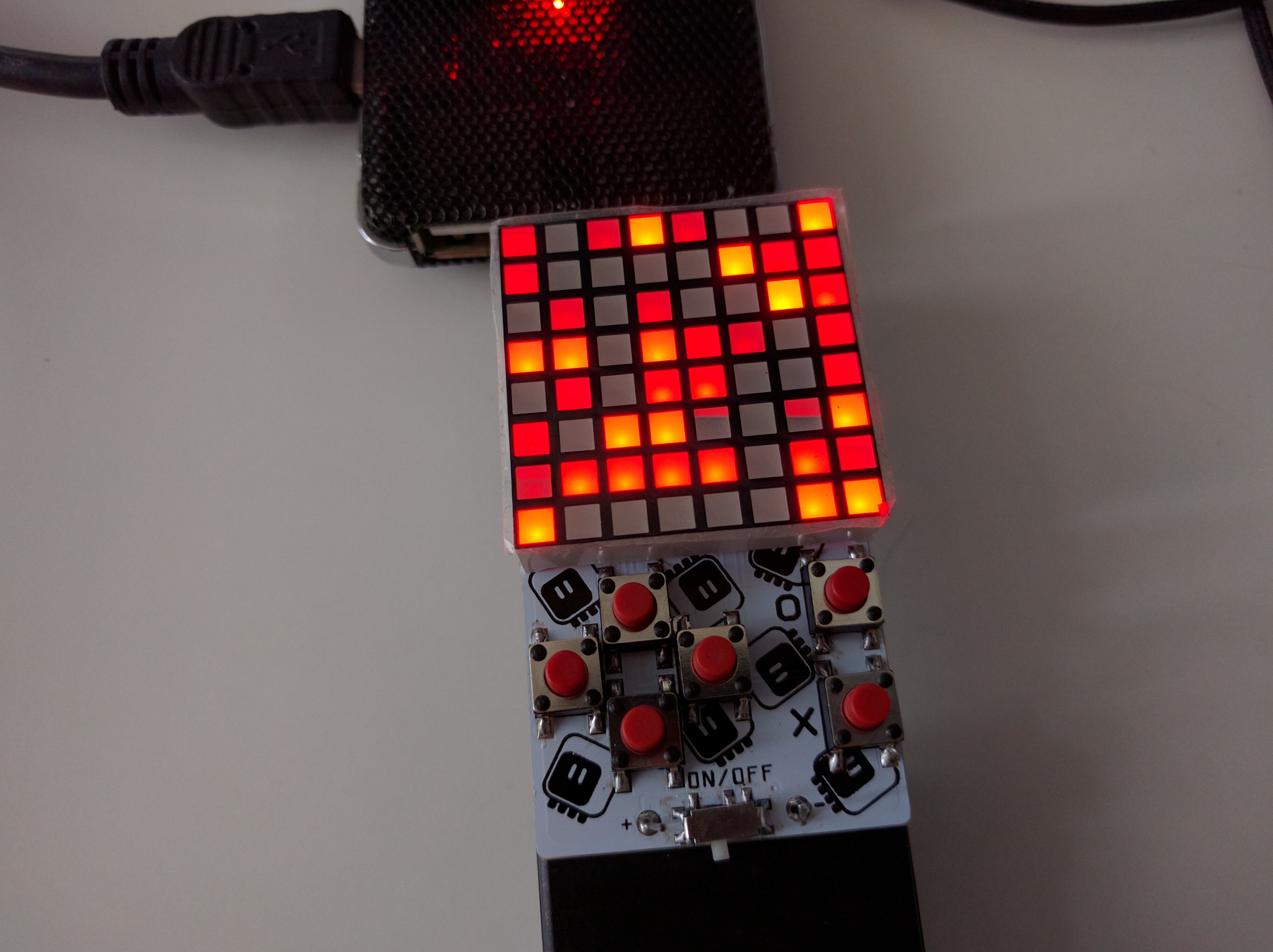Driving the Matrix¶
Published on 2018-08-01 in PewPew Standalone.
The whole point of building this device is cutting the costs, and the two main tricks for it are using a single-color matrix and simulate the 4 colors with 4 shades, and driving the matrix in software directly from the microcontroller. Obviously, for this to work I need to write the code that would drive the matrix and that would let me display 4 recognizable shades.
Turns out this is more difficult than anticipated.
Initially I thought that I will simply plug the matrix-driving function into the system tick interrupt of CircuitPython. Something like this:
void pew_tick(void) {
digitalio_digitalinout_obj_t *pin;
pew_obj_t* pew = MP_STATE_VM(pew_singleton);
if (!pew) { return; }
pin = MP_OBJ_TO_PTR(pew->cols[pew->col]);
common_hal_digitalio_digitalinout_set_value(pin, true);
pew->col += 1;
if (pew->col >= pew->cols_size) {
pew->col = 0;
pew->turn += 1;
if (pew->turn >= 3) {
pew->turn = 0;
}
}
for (size_t x = 0; x < pew->rows_size; ++x) {
pin = MP_OBJ_TO_PTR(pew->rows[x]);
uint8_t color = pew->buffer[(pew->col) * (pew->rows_size) + x];
if (
((color & 0x03) == 0x03) ||
(color & 0x01 && pew->turn == 0) ||
(color & 0x02 && pew->turn > <font color="#ff73fd">0</font>)) {
common_hal_digitalio_digitalinout_set_value(pin, true);
} else {
common_hal_digitalio_digitalinout_set_value(pin, false);
}
}
pin = MP_OBJ_TO_PTR(pew->cols[pew->col]);
common_hal_digitalio_digitalinout_set_value(pin, false);
}
This works reasonably well. There are two problems, though. The system tick happens once every millisecond, so the least bright pixel is getting 41Hz refresh rate (it’s only one once every 3 frames, and there are 8 columns to scan). That’s slow enough that some blinking is visible. The other problem is that the two brightest shades are really difficult to tell apart — that is because human eye is logarithmic in its sensitivity, so to get good shades, I would need to put them on a logarithmic scale. That means that I need more than just 3 frames, and that makes the least bright shade blink even more.
I can think of three ways of fixing this problem.
The easiest and most hacky way, that I actually tested already, is to simply increase the speed of the system tick timer. Of course that has a side effect of all time-keeping functions also increasing in speed, but we could adjust for that. I’m not sure how much I can increase it before other side effects kick in, though, and I don’t like how hacky that is.
The second easiest solution would be to use PWM on the row pins to control the brightness. I can set it to a pretty high frequency, and then refreshing the 8 columns could be done at 125Hz, which is enough for not seeing them blink. I would also get a really smooth scale of shades then. The problem is that my choice of pins for the rows was somewhat random, and not all of them support PWM — so I would need to design a new PCB. I might be able to work around this by rotating the matrix 180° — I need to check if then all the row pins support PWM.
Finally, the most “correct” solution would be to leave the system tick timer alone, and use a dedicated timer with a separate interrupt for doing this. Unfortunately that requires a little more skill than I have at the moment, but perhaps I could learn.

 deshipu.art
deshipu.art